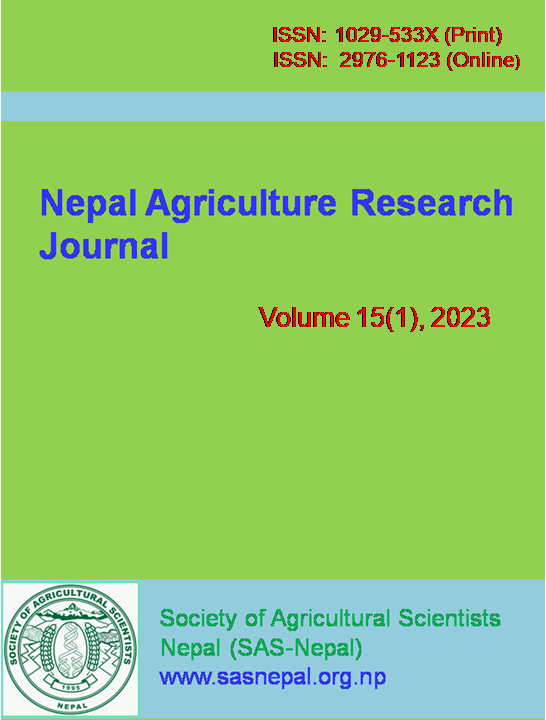Detection of superior rice genotypes through evaluating growth and yield parameters
DOI:
https://doi.org/10.3126/narj.v15i1.51086Keywords:
Correlation, panicle, rice, grain yield, tillersAbstract
Rice (Oryza sativa L.) is the first staple crop in terms of area coverage for cultivation and production in Nepal. In rice breeding programs, developing superior genotypes depends on the evaluation of growth and yield parameters. Thus, to detect some of the primary superior genotypes, we evaluated the growth and yield parameters of 24 genotypes of rice in Rampur, Chitwan, Nepal. The rice varieties were planted in an alpha lattice design with three replications. The traits, such as plant height, number of tillers, number of effective tillers, length of panicles, number of panicles per square meter, and grain yield, were found to be highly significant (p=0.05). Sabitri (4.8 t ha-1) and Makwanpur-1 (4.4 t ha-1) were the two rice genotypes that yielded the most. Plant height, panicle length, and grains per panicle showed positive and significant (p=0.05) correlations with grain yield, showing potential genotypes for higher yield. We concluded that, among all 24 genotypes examined, the most promising varieties from a growth and yield perspective were Sabitri and Makwanpur-1.
Downloads
Downloads
Published
How to Cite
Issue
Section
License
This license allows reusers to copy and distribute the material in any medium or format in unadapted form only, for noncommercial purposes only, and only so long as attribution is given to the creator.




